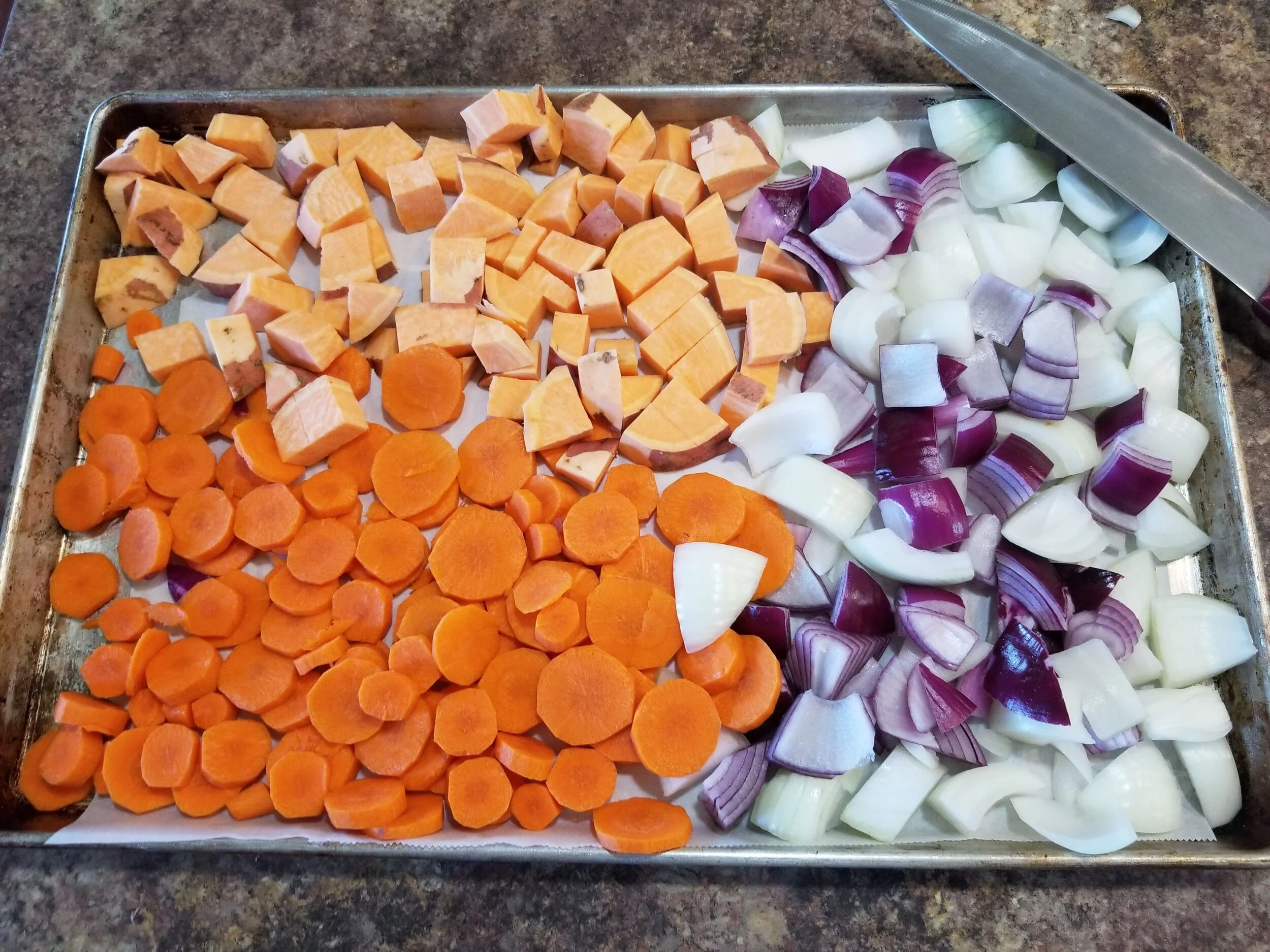Iron Rich Lentil Salad
In my last newsletter, Iron’s Irony, we talked about the iron in your diet. This week I want to share one of my favorite salads, Iron Rich Lentil Salad, which has 6.8 mg of iron per serving.
The roasted vegetables in this Iron Rich Lentil Salad pair nicely with the lentils and whole grains. Balsamic vinegar, rosemary, and thyme offer a complexity of flavor. I like this salad because it is delicious whether you eat it warm (after you prepare it) or take it with you for a healthy and delicious cold lunch.
A bit of meal prep can make this salad easy to pull together. The day before you make the salad you will want to soak your whole grains. Soaking whole grains releases their minerals, making it easier for your body to absorb them. Soaking grains overnight also decreases the cooking time. Simply give the grain a good rinse, place in a bowl, cover with 3 times the amount of water and let soak at least 8 hours
Lentils do not need to be soaked but they can be cooked in advance. Rinse 1 cup of dried lentils and place in pot with 3 cups water or broth. Bring to a boil and simmer until tender, about 20-25 minutes. Drain any excess liquid.
You can also cut the vegetables and roast ahead of time. Pre-heat over to 425 degrees F. Arrange veggies in a single layer on baking pans with parchment paper (use 2 pans if needed). Roast veggies for 20-30 minutes, until tender (depends on which veggies you use and how big they are cut).
I like to use carrots, sweet potatoes, and onions in my Lentil Salad but this salad will easily work with other roasted vegetables you enjoy. I’ve had it with mushrooms and zucchini - use what you have on hand! Use whole grains like wheat berries, kamut, and farro for this recipe. These grains have a pleasantly chewy texture and rich, buttery flavor that is perfect for salads.
Iron Rich Lentil Salad
4 servings
3 carrots, chopped (about 2 cups)
1 medium sweet potato, cubed
2 onions, slivered or large dice
2 1/2 cups of cooked lentils (cook 1 cup dried lentils)
1 cup of cooked whole grains - try wheat berries, kamut, or farro (cooked per directions on package)
1/4 cup of Balsamic vinegar
1/2 teaspoon dried rosemary
1/2 teaspoon dried thyme
Pre-heat oven to 425 degrees F. Arrange veggies in a single layer on baking pans with parchment paper (use 2 pans if needed). Roast veggies for 20-30 minutes, until tender (depends on which veggies you use and how big they are cut).
While the veggies are cooking, mix together the cooked lentils and cooked whole grains. Add the balsamic vinegar, rosemary, and thyme.
Once the veggies are done , mix together with the lentil mixture. Serve as is or serve over a bed of greens. I like to top with chopped bell pepper (raw). Enjoy!
Leftovers will keep up to 5 days in your refrigerator. Leftovers can be eaten cold and make great lunches!
Will you try this salad? Let me know in the comments below :)











